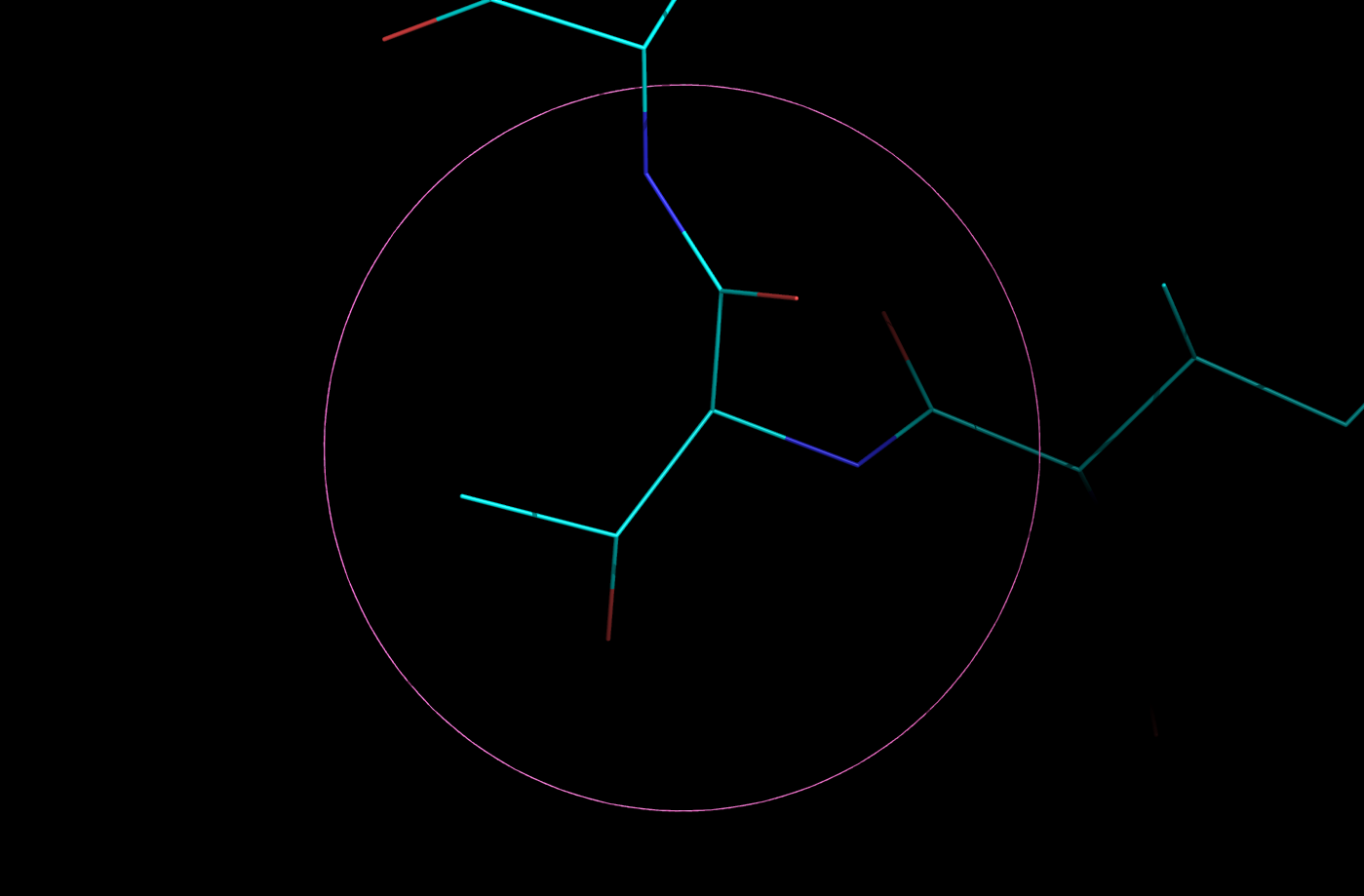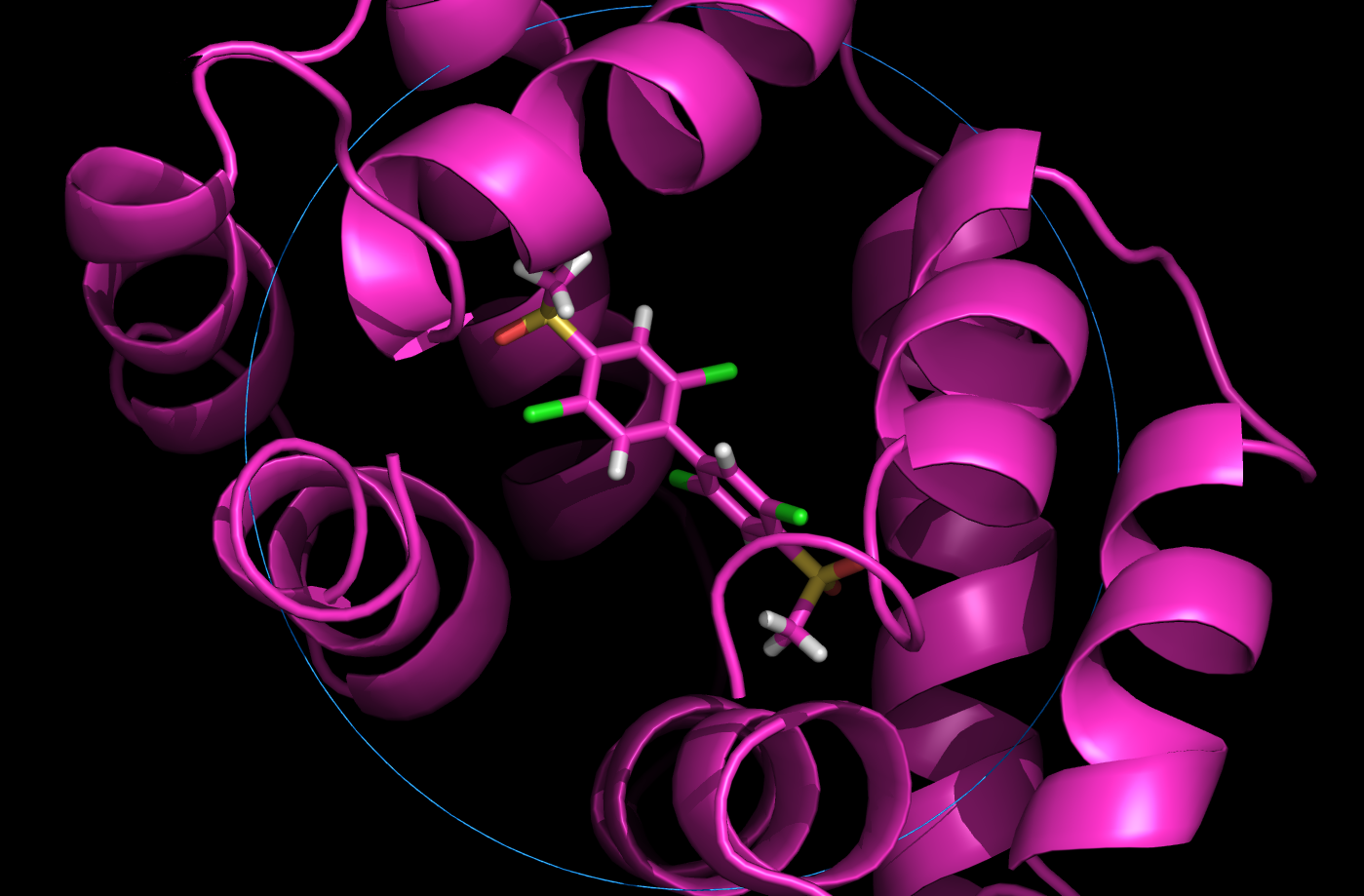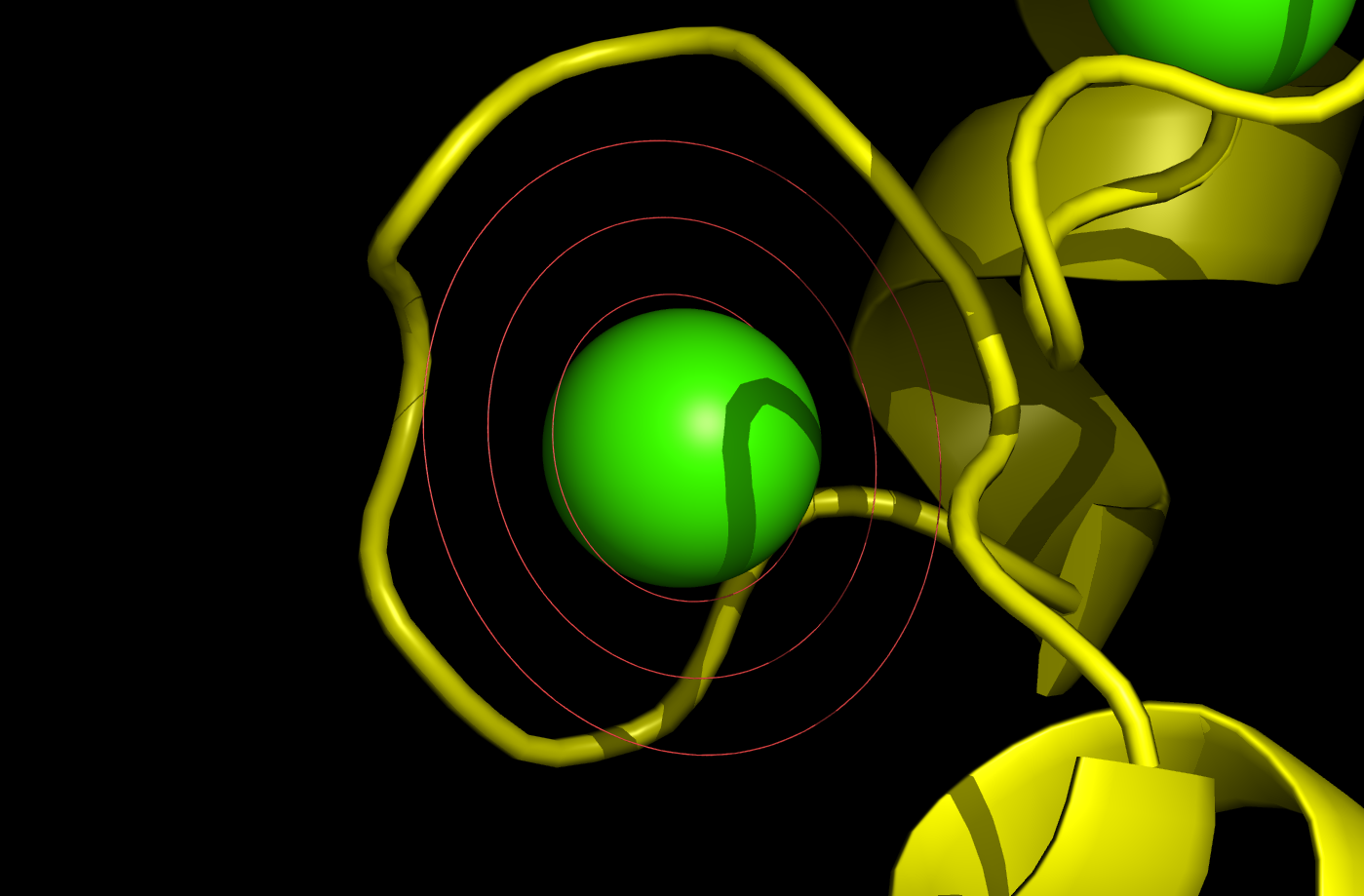CgoCircle
Jump to navigation
Jump to search
Overview
This script will create a CGO circle with the origin at the specified X,Y,Z coordinates. Also, you can specify the radius and the colors. See the examples.
If you want to draw a circle around an object or selection, use circleSelection. If you want pure flexibility over your circle then use cgoCircle.
There are two functions here:
cgoCircle
- — creates a CGO circle at some user-specified location
circleSelection
- —creates a circle around the named object or selection.
Usage
import math
import pymol
from pymol.cgo import *
import random
def cgoCircle(x, y, z, r=8.0, cr=1.0, cg=0.4, cb=0.8, w=2.0):
"""
Create a CGO circle
PARAMS
x, y, z
X, Y and Z coordinates of the origin
r
Radius of the circle
cr, cg, cb
Color triplet, [r,g,b] where r,g,b are all [0.0,1.0].
w
Line width of the circle
RETURNS
the CGO object (it also loads it into PyMOL, too).
"""
x = float(x)
y = float(y)
z = float(z)
r = abs(float(r))
cr = abs(float(cr))
cg = abs(float(cg))
cb = abs(float(cb))
w = float(w)
obj = [ BEGIN, LINES, COLOR, cr, cg, cb ]
for i in range(180):
obj.append( VERTEX )
obj.append(r*math.cos(i) + x )
obj.append(r*math.sin(i) + y )
obj.append(z)
obj.append( VERTEX )
obj.append(r*math.cos(i+0.1) + x )
obj.append(r*math.sin(i+0.1) + y )
obj.append(z)
obj.append(END)
cName = cmd.get_unused_name("circle_")
cmd.load_cgo( obj, cName )
cmd.set("cgo_line_width", w, cName )
return obj
def circleSelection( selName, r=None, cr=1.0, cg=0.4, cb=0.8, w=2.0 ):
"""
circleSelection -- draws a cgo circle around a given selection or object
PARAMS
selName
Name of the thing to encircle.
r
Radius of circle.
DEFAULT: This cript automatically defines the radius for you. If
you select one atom and the resultant circle is too small, then
you can override the script's calculation of r and specify your own.
cr, cg, cb
red, green and blue coloring, each a value in the range [0.0, 1.0]
RETURNS
The circle object.
"""
((minX, minY, minZ), (maxX, maxY, maxZ)) = cmd.get_extent(selName)
if r==None:
r = max( [maxX-minX, maxY-minY, maxZ-minZ] )
stored.coords = []
cmd.iterate_state(1, selName, "stored.coords.append([x,y,z])")
l = len(stored.coords)
centerX = sum(map(lambda x: x[0], stored.coords)) / l
centerY = sum(map(lambda x: x[1], stored.coords)) / l
centerZ = sum(map(lambda x: x[2], stored.coords)) / l
return cgoCircle( centerX, centerY, centerZ, r, cr, cg, cb, w )
cmd.extend( "cgoCircle", cgoCircle )
cmd.extend( "circleSelection", circleSelection )
Updates
- Line width option
- better circle naming




